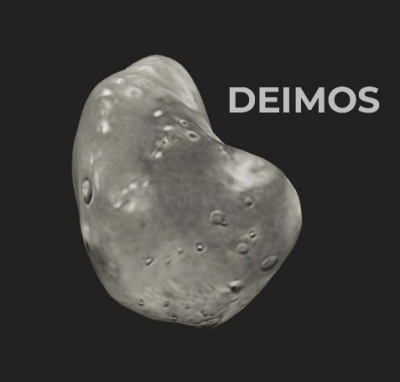
Deimos, like Phobos, was named after a son of the Greek god of war, Ares (remember, planet Mars was named after the Roman god of war).
Legend has it that he accompanied his father and brother to battle – not a surprise considering that Deimos literally means “dread” while Phobos means “fear”! But thankfully his planetary namesake is not all that “dreadful” in size or form. With an average diameter of about 12 kilometres, and a mass of around 1.5 quadrillion kilograms, Deimos is tiny even when compared to its sibling-moon, Phobos!
Its irregular shaped body (having dimensions of 15 by 12 by 11 kilometres) seems to be made up of a carbon-rich material generally found on certain types of asteroids. Its surface is covered with a dry and loose layer of dust and broken rocks known as regolith (a combination of the Greek words for “blanket” and “rock”) which may be up to 100 metres thick.
Though Deimos has many impact craters, its surface is smoother than Phobos’. As on date, only two main features on it have been identified and named.
Both are impact craters said to be around three-kilometres wide. They are called Swift and Voltaire in honour of the famous Irish and French writers who wrote about the two Martian moons more than a century before their discovery! The remaining craters are much smaller in size.
Picture Credit : Google




